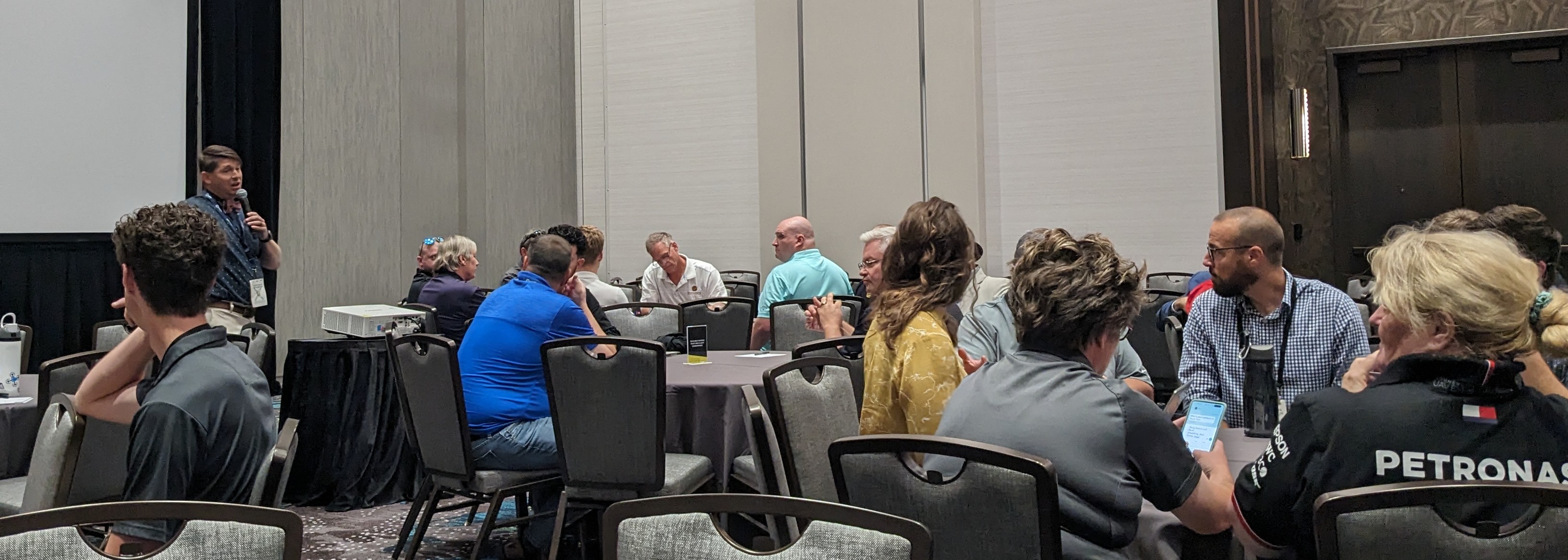The commercial drone industry relies on technology to do their work, but all the technology in the world can be moot if you lack a skilled workforce or pipeline of employees to actually utilize them. A crucial pathway for new drone pilots and other drone-related professions are universities, who face their own uphill battles in creating, maintaining and promoting their programs. During the University Roundtable session at Commercial UAV Expo, many of those challenges and ideas were brought out into the open.
The session, lead by Chris Strasbaugh of The Ohio State University, invited professionals affiliated with universities and other educational organizations to come together to discuss several key focus areas. Participants self-selected a table with a pre-determined topic, and a facilitator to keep the discussion going. Topics included the recruitment of students, curriculum development and instructor qualifications, preparing students for the commercial workforce, scaling campus flight management, and the tricky topic of insurance and liability when it comes to developing drone programs.
Curriculum development challenges
One theme that crossed over discussions was the challenges of creating an effective curriculum for students, particularly one that extends beyond merely learning “how to fly.” Teaching students about payloads, sensors, data collection and more is a big ask, and can be something that could also involve other departments. Several attendees said that while teaching flight knowledge is a crucial part of the process, it doesn’t negate the need for building on additional skills, especially those that will be useful for future employment.
Another challenge facing the curriculum development process is the rapid pace of technological development. One participant commented that their curricula are “perpetually in draft form” because changes to software, platforms and even regulations can re-write their courses even in the middle of the year. Industry professionals, too, stressed that there was a need for more dialogue between educators and employers - to make certain that their goals align, encouraging educators to reach out to local employers to consult on the content of their courses.
Lowering risk and liability
Several groups also mentioned that they have had to get high-level administrative buy-in to implement their drone programs, but also that their universities often misunderstand the complexity involved, giving them an “all clear” that is not well informed. There were a surprising number of educators who discussed the potential for using FAA-Recognized Identification Areas, or FRIAs, to provide spaces for their students to utilize drones on campus, but shared that their experience in setting them up has not always been straightforward.
Other participants recommended getting very familiar with the risk management portion of their campus’ administration so that they can anticipate and get ahead of any potential conflicts or challenges.
A unique opportunity to connect
The roundtable conversations have been an annual event for the last several Commercial UAV Expos, and many in the room expressed that they didn’t often get a chance to have these types of discussions with others at different universities facing similar challenges. Participants in this year’s roundtables stated that they intend to reconnect over the coming year to continue these conversations.
















Comments